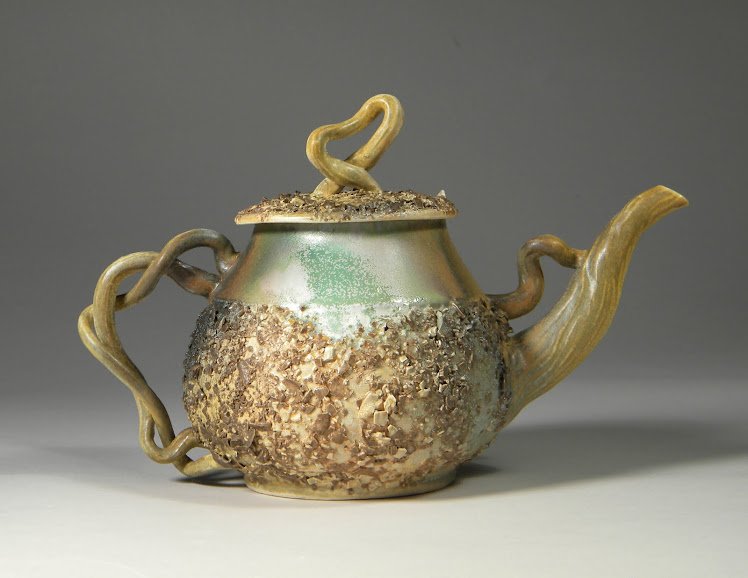I promised glaze recipes earlier in this blog so here is my new favorite glaze. The recipe was first printed in Clay Times in the March/April 2005 edition by Richard Burkett. His recipe included the addition of .25 cobalt carbonate but without it, it's a beautiful wine red breaking white where thin. Thinner coats of glaze produce a mottled wine and white surface. Thicker coats produce a more solid colored wine. The glaze has not run for me and has a nice semi-gloss appearance. Slow cooling has little effect on this glaze but will change the color slightly to more of a burgundy than red. My test firing was done in oxidation and I do not know what the results would be in reduction.
32 Silica (flint)
21 Gerstley Borate
20 Calcium Carbonite (whiting)
16 Nepheline Syenite
11 EPK (kaolin)
5 Tin Dioxide
.15 Chrome Oxide (chromium green)

